The Space Race encapsulates both the best and the worst of aspects of U.S. history. On the one hand, there is humanity’s drive to learn and explore. All space programs have no choice but to celebrate the wonders of mathematics, physics, and engineering. (To put this into ’80s film terms: no matter how jock-ish an image an astronaut wants to put forth, it’s still nerds who get us into space.) Space exploration doesn’t just raise the possibility that humanity will find new homes across the galaxy, but it also leaves technological innovation in its wake.
But there’s still that other hand. The Space Race of the 1950s and 60s was the result of intense hatred and fear between the U.S. and the Soviet Union. Many of the early aims of the program were baldly militaristic rather than scientific. At least one of the leading engineers was a former Nazi. And as idealistic as NASA was, it still enforced rigid racial and gender lines, refusing to allow qualified women to train as astronauts, and segregating Black mathematicians and would-be astronauts for decades. With all of that in mind we’ve rounded up some amazing stories of space—some true, some fictional, some historical, some set, hopefully, in our future—with an eye toward highlighting the stories of those who had to fight even harder to prove they had the right stuff.
The Early Days of the Space Program
Sex and Rockets by John Carter
We wouldn’t have had a space program without the Jet Propulsion Laboratory. And we wouldn’t have had JPL without Marvel Whiteside “Jack” Parsons, a rocket scientist and occultist who balanced a life of chemical research and progressive activism with his dedication to the teachings of Aleister Crowley. Parsons had to drop out of college repeatedly as the Depression worsened, but instead teamed up with a few other young men to form a group called GALCIT—which became JPL in 1943. The group developed “Jet-Assisted Take Off” which became a vital technology as World War II began, and spent the war developing better rocket fuels. After leaving JPL, Parsons bounced between different research gigs, practicing sex magic, building rockets for the Israeli government, and attempting to call the goddess Babalon with some help from a pre-Dianetics L. Ron Hubbard. The fascinating thing about Parsons is that for him these pursuits were all of a piece: he was trying to make the world a better place. By the time he died in an explosion in 1952, he held seven patents, and JPL was about to become one of the hubs of the US space program. Carter’s Sex and Rockets is a bit sensationalistic, but it also looks at a fascinating, little-known corner of scientific history.
Buy the Book
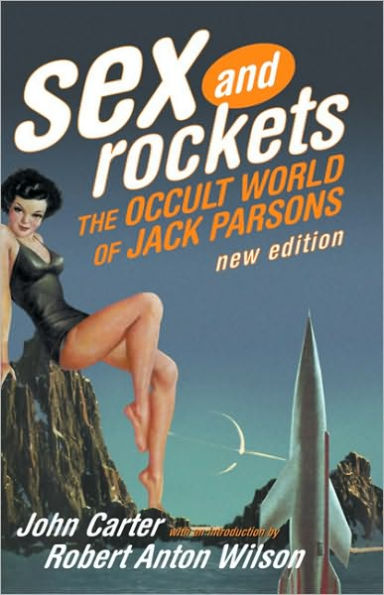

Sex and Rockets: The Occult World of Jack Parsons
Breaking the Chains of Gravity by Amy Shira Teitel
Teitel takes us into the prehistory of the Space Race, covering the scientific breakthroughs, strong personalities, and occasional moments of genius that led to the space program. The National Advisory Committee for Aeronautics (which later became NASA) and the U.S. Air Force gathered test pilots and rocket science, pushing planes and rockets faster with each year, exposing the human body to ever more punishing speeds and ever-higher doses of radiation. Teitel chronicles Wernher von Braun’s work on developing rockets, and how, in the wake of Sputnik, Eisenhower began pulling all the threads of research together to form NASA.
Buy the Book
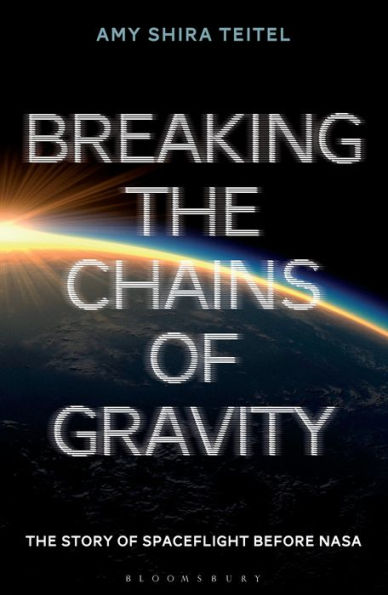

Breaking the Chains of Gravity: The Story of Spaceflight before NASA
Laika by Nick Abadzis
Nick Abadzis’ graphic novel gives a fictionalized account of Laika’s life in the early Soviet rocket program, the tests that were done on her so her health could be monitored during her flight. It’s a heartbreaking story, as the scientists knew from the beginning she was doomed—her test is meant to see if a living mammal could even survive liftoff, but there was no plan to bring her back. Abadzis’ book devotes some time to the chief engineer who plans and watches her flight, and the lab tech who acts as her primary caretaker before she’s sent up, showing that within the program there was plenty of debate about the ethics of what they were doing.
Buy the Book
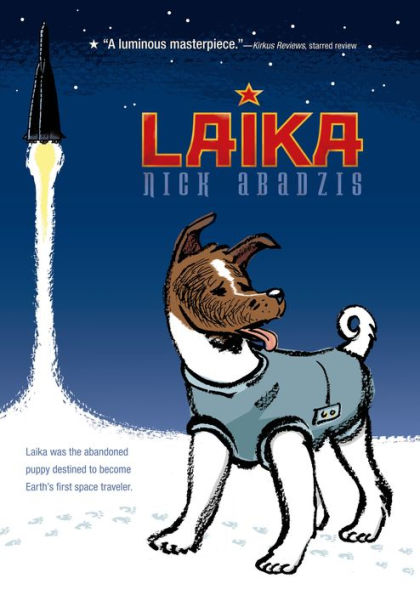

Laika
The Human History and Drama of the Space Race
The Right Stuff by Tom Wolfe
Wolfe’s book is the absolute standard in American myth-making. Covering the Mercury Program and the selection of the Mercury 7, it picks up about where Teitel’s book leaves off to cover the particular weird culture that grew up around America’s test pilots, the ways those pilots were tested for space, and the way they were sold to the public. Why should the US funnel so much money into this weird project? How could ordinary US citizens be convinced to treat astronauts as heroes? He also devotes a fair amount of time to the way a side myth was developed around the astronauts’ stoic wives, who spent their days raising the children, keeping perfect homes, and waiting for the knock at the door that would tell them their husbands had died in the latest test.
Buy the Book
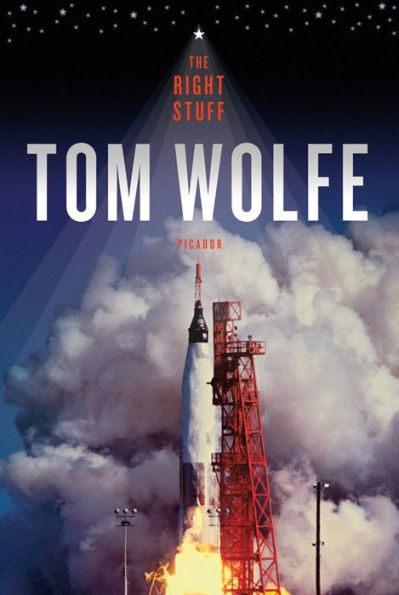

The Right Stuff
A Man on the Moon: The Voyages of the Apollo Astronauts by Andrew Chaikin
A Man on the Moon came out as part of the 25th anniversary celebration for the first lunar landing. The book covers the Apollo program, and interviews the astronauts, ground crew, engineers, wives, and families to create a portrait of the whole program. It covers everything from the tragic fire on Apollo 1 to Alan Shepard whacking golf balls around on the moon during the Apollo 14 mission. It also chronicles moments like John Young’s fateful misstep during Apollo 16, when he tripped over a cable and ruined partner Mark Langseth’s heat-flow experiment, which had been years in the making (You can’t exactly run home for a new cable when you’re on the moon), and of course the terror of Apollo 13, when the U.S. thought their three latest astronauts were either going to asphyxiate in orbit, or burn up on re-entry.
Buy the Book
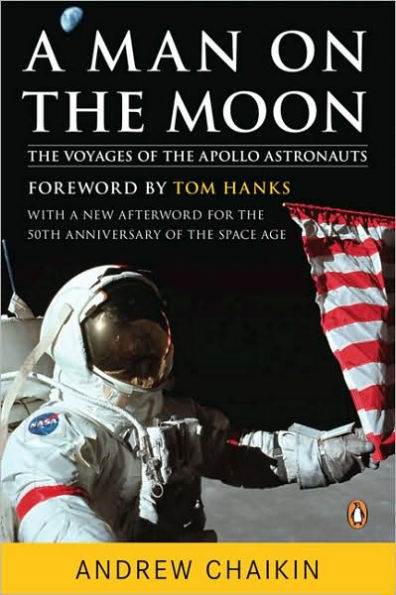

A Man on the Moon: The Voyages of the Apollo Astronauts
Rocket Girl: The Story of Mary Sherman Morgan, America’s First Female Rocket Scientist by George D. Morgan
George D. Morgan’s book is the definition of a labor of love: Morgan spent years researching the early life of his mother, Mary Sherman Morgan, who turned her high school love of science into four years studying chemistry at Minot State University during World War II, and a career with North American Aviation during the 1950s. While there she developed a liquid fuel called Hydyne, which allowed Wernher von Braun’s Jupiter-C rocket to slip the bonds of Earth, and put the U.S. on par with the Soviet Union’s space program for the first time.
Buy the Book


Rocket Girl: The Story of Mary Sherman Morgan, America's First Female Rocket Scientist
Rise of the Rocket Girls: The Women Who Propelled Us, from Missiles to the Moon to Mars by Nathalia Holt
Nathalia Holt’s discovery of the “Rocket Girls” was purely accidental: she and her husband were trying to pick a name for their first baby, and when they thought of a combo they liked—Eleanor Frances—they decided to look it up to see if any notable people had already had the name. They found Eleanor Francis Helin, a female computer. Holt, who had no idea women even worked for NASA in the 1960s, did a bit of research and discovered a whole group of female computers employed by JPL in Pasadena. She dove into the story and conducted interviews with dozens of women who were employed by the lab between the 1940s and 1960s, often simply cold-calling women with first names like Barbara and Virginia because so many last names had changed with marriages.
Buy the Book
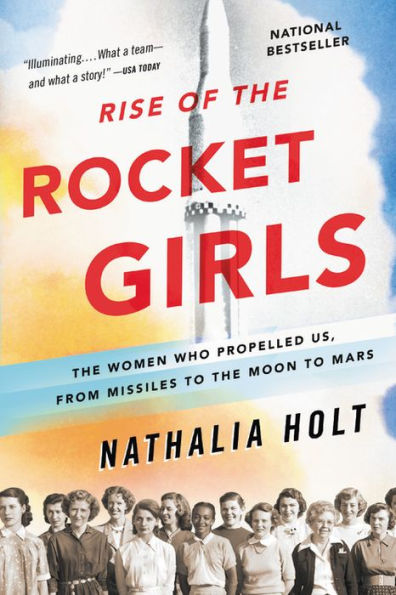

Rise of the Rocket Girls: The Women Who Propelled Us, from Missiles to the Moon to Mars
Hidden Figures: The American Dream and the Untold Story of the Black Women Mathematicians Who Helped Win the Space Race, by Margot Lee Shetterly
While the women of JPL were an interracial group in Pasadena, Shetterly focuses on the women of NASA’s Langley Base in Hampton, Virginia, where in addition to basic misogyny the Black computers had to deal with the racism of the Jim Crow South. These could be humiliations both overt (Miriam Mann had to tear the cafeteria’s “Colored Computers” sign down each day until her coworkers stopped replacing it) and subtle (Katherine Johnson used the default white bathroom because no one had ever bothered to label it—because no one ever thought a Black mathematician would be working in that department) The book digs into the women’s personal lives, their triumphs at work, and the careers they built after the first rush of the space program began to wear off. It also give a much-expanded view of life and work at Langley, and covers the careers of many more women than could fit into the running time of the (great) film adaptation.
Buy the Book
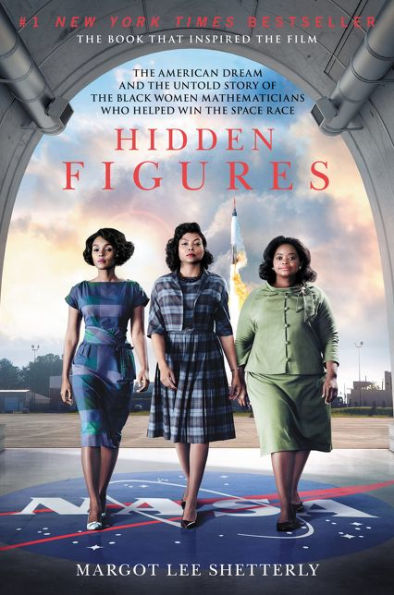

Hidden Figures: The American Dream and the Untold Story of the Black Women Mathematicians Who Helped Win the Space Race
The Mercury 13: The True Story of Thirteen Women and the Dream of Space Flight by Martha Ackmann
The book is an overview of the women who were subjected to the same tests as the men selected for the Mercury Program. They underwent often excruciating physical tests at the Lovelace Foundation, as well as a battery of psychological tests, in order to track differences between mens’ and womens’ reactions. But the thirteen women who passed Phase 1 abruptly learned that they weren’t going to be taken to Pensacola to do the next round of testing, and they were never going to be given a shot at space—despite the fact that several of the women did better than men who had been selected for Mercury. Appeals to NASA and Congress were dismissed, with even John Glenn (who was a vocal supporter of Katherine Johnson) saying that women were unfit for the space program despite literal scientific evidence to the contrary.
Soviet cosmonaut Valentina Tereshkova became the first woman in space in 1963; it wasn’t until 20 years later that Sally Ride became the first American woman in space.
Buy the Book


The Mercury 13: The True Story of Thirteen Women and the Dream of Space Flight
The Astronaut Wives Club by Lily Koppel
The Astronaut Wives Club covers the other side of the public face of the American Space Program: the wives who were expected to stay home, mind the children, and run the household so smoothly that their men could dedicate themselves to going to the moon. Of course what that meant was that they also had to be pretty and patriotic when interviewed, perfectly-coiffed-but-not-snooty when Life Magazine wanted a cover photo, and supportive of each other every time a husband died—because acting out or drinking or going to a psychologist was not an option.
Koppel looks at their lives during and after the main rush of the space race, showing the privileges that came with their husbands’ jobs (Corvettes, tickets to Broadway shows) but also the constant pressures that caused many of the marriages to crack up as soon as the cameras turned the other way.
Buy the Book
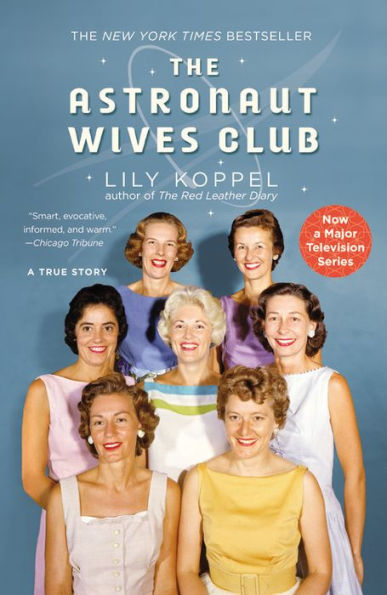

The Astronaut Wives Club: A True Story
We Could not Fail: The First African Americans in the Space Program, by Richard Paul and Steven Moss
<LeVar Burton voice>: Have you ever wondered why so many space centers are the in the Southern region of the United States?</LeVar> In the 1960s, it had finally become clear to most centrist white politicians that if the U.S. wanted to keep its post-War economy chugging, it needed to end segregation, and it needed to shoot some adrenaline into the Southern economy. How to do that? Plant some of the highest tech campuses in the world in Houston, Texas, Huntsville, Alabama, the fields of Mississippi, and Brevard County, Florida, ship some scientists down, and force everyone to hire a wide range of men and women, regardless of Jim Crow.
We Could Not Fail profiles ten of the first Black men to be hired by NASA, and shows their struggles and fears as they tackled a job that was already among the hardest on our planet, and had to do it all with the eyes of history boring holes into the back of their necks.
Buy the Book
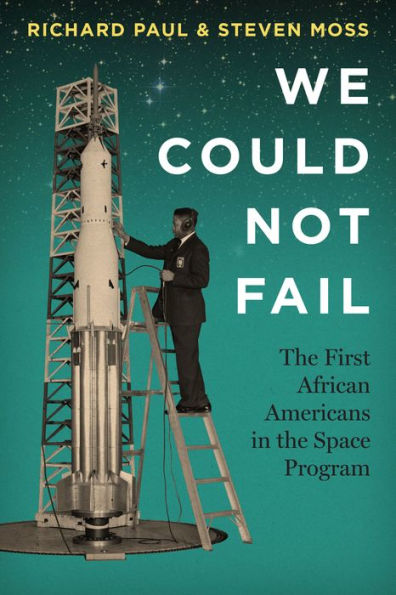

We Could Not Fail: The First African Americans in the Space Program
Space Trivia
Amazing Stories of the Space Age by Rod Pyle
Pyle’s fun-but-also-terrifying book covers the space race through anecdotes about all the dead ends and botched attempts at spacecraft, some hilarious, and some terrifying, that play out in the background of the well known stories of Mercury, Gemini, and Apollo. Here you’ll read about an idea to use atomic bombs to blast off (too bad for all the dead/irradiated folks on the ground); the Silverbird, the suborbital plane that the Nazis tried to develop so they could bomb the U.S.; Project Horizon, the plan to open a military base on the moon; and Wernher von Braun’s extensive plans for a mission to Mars. He also details the many, many catastrophes caused by the Soviet Union’s push to beat the U.S. to the moon.
Buy the Book
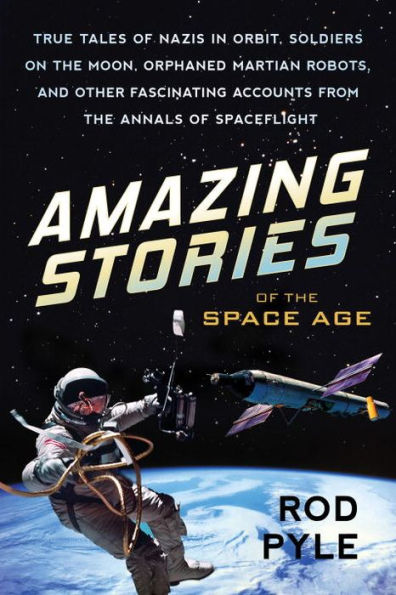

Amazing Stories of the Space Age: True Tales of Nazis in Orbit, Soldiers on the Moon, Orphaned Martian Robots, and Other Fascinating Accounts from the Annals of Spaceflight
Packing for Mars: The Curious Science of Life in the Void by Mary Roach
What happens if you vomit in your helmet during a space walk? How do you use a space toilet? Why does NASA have an insatiable need for cadavers?
…can we go back to the vomit question?
Mary Roach has dug into lots of odd corners of life, from the intricacies of sex to the many, many ways humans have tried to either prove or disprove the existence of ghosts. In Packing for Mars, she uses that same attention to detail to look at what it’s going to take for humanity to move off-planet. She looks at the effects of space on the human body and the human mind, observes NASA’s capsule crash tests (that’s where the cadavers come in), drinks her own urine, and talks to Japanese astronaut hopefuls who have to fold 1,000 paper cranes to test their psychological fitness, all to show us just how much effort it’s going to take to get us off this rock.
Buy the Book
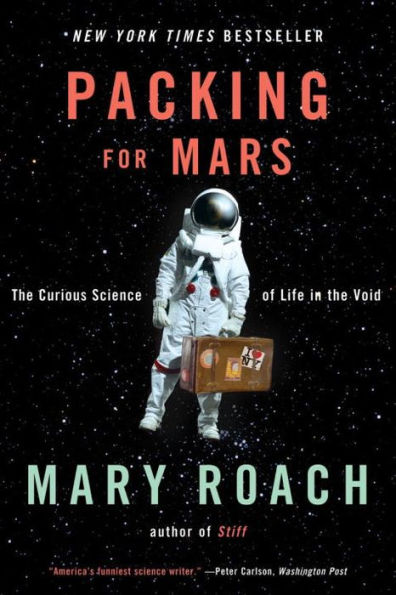

Packing for Mars: The Curious Science of Life in the Void
Our Factual Future (Maybe)
Soonish: Ten Emerging Technologies That’ll Improve And/Or Ruin Everything, by Kelly and Zach Weinersmith
Dr. Kelly Weinersmith is a bioscience researcher at Rice University, who specializes in studying parasites that attach themselves to their hosts and then manipulate their behavior (shudder) and her husband Zach is the cartoonist behind Saturday Morning Breakfast Cereal, a hilarious nerd webcomics that probably features some of the best God cameos on the internet. The two teamed up to delve into the weird and hopeful world of near-future tech, looking at the possibilities of asteroid mining, 3D printing, space elevators, and robotics. While it isn’t only a space travel book, many of the innovations the Weinersmiths feature are specifically designed to either get ordinary people into space, or to make them more comfortable once they’re there. The two interview researches and engineers to hazards some predictions about the future, and to theorize the various ways those futures might be all we could dream of… or might end with us enslaved by cookie-wielding robots.
Buy the Book


Soonish: Ten Emerging Technologies That'll Improve and/or Ruin Everything
Our Fictional Past
The Calculating Stars by Mary Robinette Kowal
Kowal’s The Calculating Stars is set in the universe of her Hugo Award-winning novelette “The Lady Astronaut of Mars.” On a cold spring night in 1952, a meteorite falls to earth and destroys much of the eastern seaboard of the United States, including Washington D.C. The Meteor, as it is popularly known, decimates the U.S. government and paves the way for a catastrophic climate change that will make Earth unlivable. After mathematician and pilot Elma York calculates the approximate date when the sea will boil, she and score of other people throw themselves into an international space race—not the U.S. versus Soviet Union, but humanity against an inexorable ticking clock. But even with such a looming threat, the International Aerospace Coalition is only attempting to put a man on the moon. It doesn’t take long before Elma begins to wonder: why can’t she and the IAC’s women go into space, too?
Buy the Book
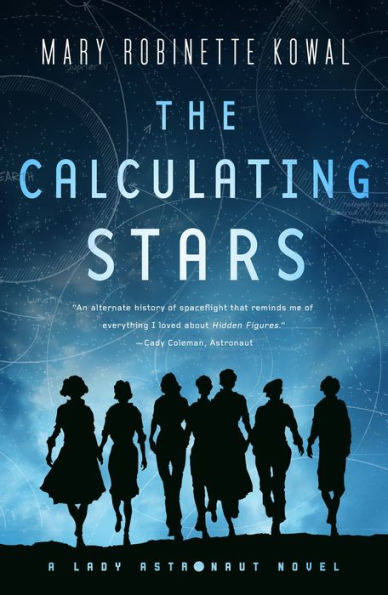

The Calculating Stars: A Lady Astronaut Novel
Our Fictional Future
The Martian by Andy Weir
Andy Weir’s man-versus-nature story ups every possible stake by stranding snarky botanist Mark Watney on Mars, and leaving him there with tenuous shelter and a severe lack of food. He proceeds to science the shit out of his situation, literally using his own waste to become Mars’ first farmer, trying to eke enough potatoes out that he can last until rescue. His story is told through his own darkly funny journal entries interspersed with accounts of the poor guys back at NASA who realize he’s still alive up there, and his guilt-stricken crewmates who have to decide how much they’re willing to risk to get him back.
Buy the Book
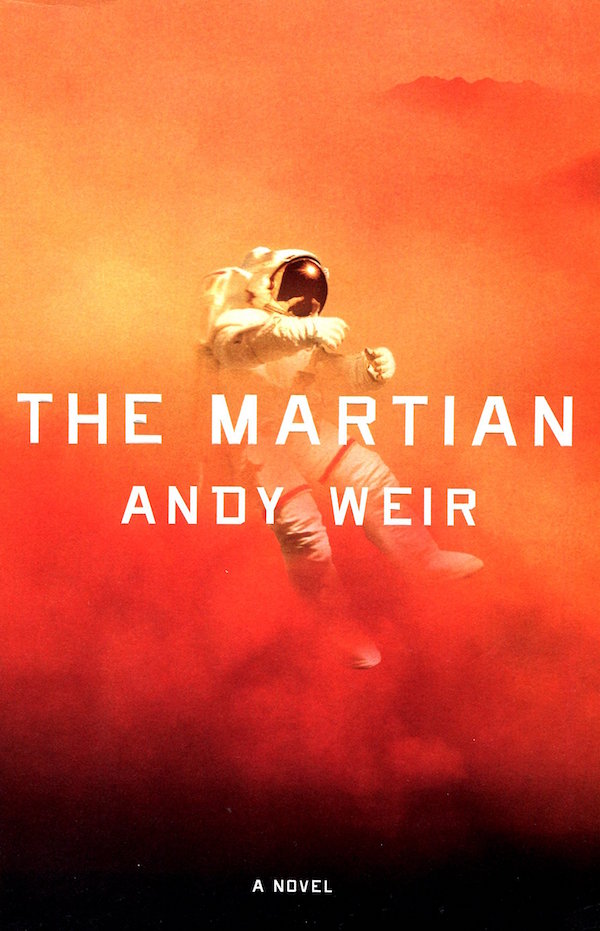

The Martian
Spaceman of Bohemia by Jaroslav Kalfař
The first Czech astronaut, Jakub Prochazka, heads off in the name of science to investigate a weird celestial dust cloud called Chopra, and also to bring glory to the Czech people. He soon becomes overwhelmed by memories of his life in Czech, his fraught relationship with his wife, and his increasingly vivid memories of his communist sympathizer father—who may have been a state-sanctioned torturer.
And then, he meets a space spider. A giant cosmic spider, with a human mouth, named Hanusz, who looooves Nutella. Is Hanusz real? Is Jakub dying? Honestly, does it matter when a book manages to be hilarious and heart-wrenching, often within the same sentence?
Buy the Book
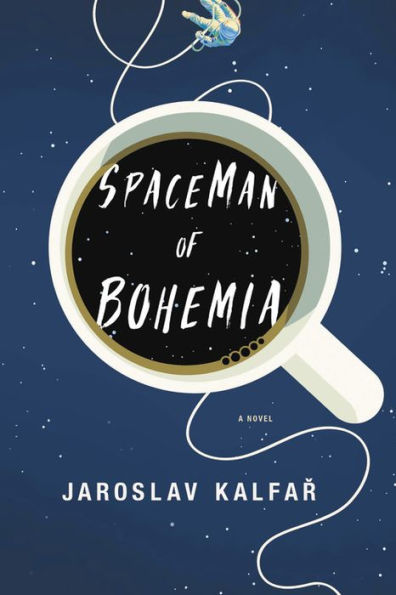

Spaceman of Bohemia
Originally published July 2018.










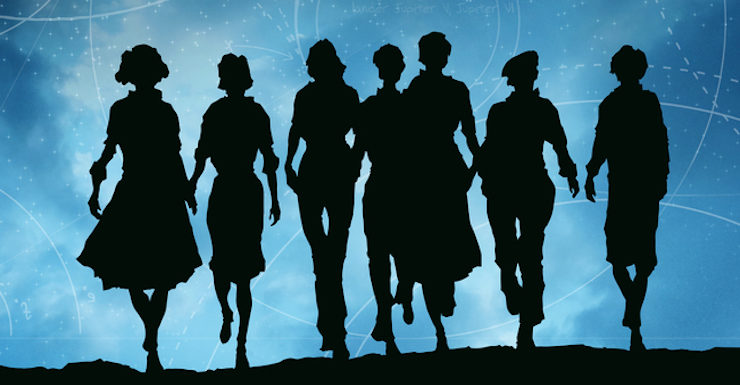
I’m afraid I will always feel ambivalent about all of this. Yes, the moon landing was a stunning achievement, but it got a substantial boost because of the knowledge that Von Braun and others of his ilk brought to the table. Knowledge that was initially used to create the world’s first ballistic missile, a missile that was built via slave labor that cost thousands of lives. So yeah, it’s kind of hard to get as enthused about this compared to when I was younger.
Great list, thanks!
#1
Go back far enough and behind every line of innovations there’s a crime to be found. It’s what we do with that knowledge going forward that matters. The US and USSR not nuking each other with Nazi rockets was such a positive step forward, at least.
I also recommend Mike Mullane’s Riding Rockets: The Outrageous Tales of a Space Shuttle Astronaut. He doesn’t pull many punches, esp. about his own negative treatment of the women around him, and he also deals with the hard topic of his supposed affair with one of the women killed in the Challenger explosion. Very jocular in places, honest, painful, and sincere in others
I strongly recommend Fraser MacDonald’s very recently published Escape from Earth: a secret history of the space rocket. This book is the most authoritattive book yet written about Frank Molina and the early years of the Jet Propulsion Laboratory. It also explores the tradegy of how Molina and others were persecuted by the FBI for thier politics while at the same time everyone willfully ignored the Nazi origins of the Saturn V.
“Here you’ll read about an idea to use atomic bombs to blast off (too bad for all the dead/irradiated folks on the ground)”
That was at a time when the US and the USSR were testing much, much dirtier nuclear weapons above ground. The project (Orion) was finally killed off when they agreed to stop doing that. I think it should have been kept alive – we might need a really powerful rocket to deflect the next large asteroid that comes our way, and we could probably launch it on a chemical first stage to avoid the radioactivity.
Mercury 13 looks pretty good
The section on the Mercury 13 women is highly misleading.
That was never an official program, it was just a voluntary series of baseline experiments unconnected to NASA.
The women who underwent the tests were never candidates for astronaut selection, simply because they didn’t meet the educational or experience requirements that were in place at the time. In order to even be considered for the astronaut corps you needed at least a STEM degree and extensive experience as a TEST pilot (not just a regular pilot) in high performance aircraft. Iirc there was a minimum flight hours requirement as well, and iirc in the first round of astronaut selection (the Original 7) you had to be active duty military as well.
The extensive physical and psych testing that the astronaut candidates underwent (the tests that some but not all of the Mercury 13 women completed…most just went thru the first of three phases) WERE NOT the primary qualifications to be an astronaut…education and test flight experience were. NONE of the women met the basic qualifications. Many male pilots, including Chuck Yeager himself, also were not qualified. The other professions (submariners, mountain climbers, etc) referred to were never seriously considered for the astronaut corps…those were just (mostly unsolicited) ideas tossed around for earlier manned spaceflight concepts (like the Man Very High program) that preceded Mercury but never materialized.
The tests that those women (and the actual astronaut candidates) underwent were just “guinea pig” experiments designed to provide a pretext for screening out the vast majority of candidates, and a way for the medical community to exploit some volunteer test subjects who weren’t able to refuse to participate if they wanted to stay in contention.
But the meme presented here that these women were discriminated against by NASA even though they did just as well as the top male candidates is bogus. These women never had the basic requirements to even apply for the astronaut corps, their participation in the tests was totally unofficial and unsanctioned by either NASA or the military who ran the tests, and their participation wasn’t suddenly stopped for no reason…it was simply because the navy got fed up with private researchers trying to cadge free use of navy facilities and staff for an unfunded and unauthorized project.
I second Mike Mullane’s Riding Rockets.
Amazingly interesting story.
On the fiction side I would add: Red Moon by Michael Cassutt
It is a crypto-historic novel about the early days of the Soviet space program, but written by a very knowledgeable person. he did do his research.
Finally, Willy Ley – a German engineer who was taken to the US by the Paperclip operation. Later he reinvented himself as a popular science and SF writer. And he also have some quite interesting memoires about his work with von Braun in Germany (just don’t forget that while this is a fascinating stuff, they acually launched missiles to bomb London).
#9, @Valentin D. Ivanov: Ley was a German rocket pioneer who came to the US, but not as part of Paperclip and who left Germany because of the Nazi takeover (in 1935), not after it
@@@@@ Carl: you are right!
It is just that in one of his books he has a first person account of the flight in Jun 1944 that reached >100 km and this confused me. Or may be it was Dornberger’s book. I have to check.
Anyway, thanks!
@Valentin, Ley did know Von Braun and I believe interviewed him after the war. Maybe it was Von Braun’s first-person account, as told to Ley?
@carl: It could be. I haven’t looked for the book yet, but I remember that the language of that book wa dreadful and very hard to read – it was in English, but with so much German left in the structure of the sentences, that I had real trouble reading it. :(
Here’s Tom Lehrer’s take on Werner von Braun. The story is that he (Lehrer) was banned from performing in the UK because of this song:
https://youtu.be/voRB4JenjqA
@@@@@ 0, Leah Schnelbach:
While there she developed a liquid fuel called Hydyne, which allowed Wernher von Braun’s Jupiter-C rocket to slip the bonds of Earth, and put the U.S. on par with the Soviet Union’s space program for the first time.
That calls to mind the first great poem of WWII.
Oh! I have slipped the surly bonds of Earth
And danced the skies on laughter-silvered wings;
Sunward I’ve climbed, and joined the tumbling mirth
of sun-split clouds,—and done a hundred things
You have not dreamed of—wheeled and soared and swung
High in the sunlit silence. Hov’ring there,
I’ve chased the shouting wind along, and flung
My eager craft through footless halls of air. . . .
Up, up the long, delirious, burning blue
I’ve topped the wind-swept heights with easy grace
Where never lark nor ever eagle flew—
And, while with silent lifting mind I’ve trod
The high untrespassed sanctity of space,
Put out my hand, and touched the face of God.
[John Gillespie Magee, Jr., High Flight, 1941]